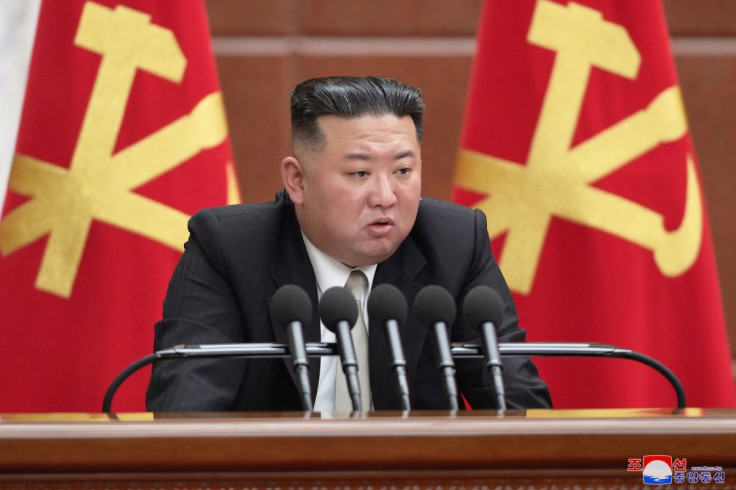
North Korea declared on Friday, Apr. 14, that it has successfully tested a new solid-fuel intercontinental ballistic missile (ICBM).
This development is expected to "radically promote" North Korea's military capabilities and enable swift missile launches, according to experts.
The test was directed by the country's leader, Kim Jong Un, who warned that enemies would "experience a clearer security crisis" as a result and that he would "constantly strike extreme uneasiness and horror into them by taking fatal and offensive counter actions until they abandon their senseless thinking and reckless acts," North Korean state media reported.
It was the North's first time employing solid propellants in an intermediate-range or intercontinental ballistic missile, a crucial step to deploying missiles more quickly during a war, according to analysts.
According to South Korea's defense ministry, Pyongyang may conduct additional tests as it is still perfecting the technology and developing the weapon, Reuters reported.
North Korean state media outlet KCNA released photos of Kim watching the launch, accompanied by his wife, sister, and daughter, and the missile covered in camouflage nets on a mobile launcher.
A state media video showed the Hwasong-18 missile blasting off from a launch tube, creating a cloud of smoke.
The development of the Hwasong-18 will "extensively reform the strategic deterrence components of the DPRK, radically promote the effectiveness of its nuclear counterattack posture and bring about a change in the practicality of its offensive military strategy," KCNA said, using the initials of the country's official name.
Hours after the report, South Korea and the U.S. air forces conducted maneuvers in which American B-52H bombers joined F-35A, F-15, and F-16 fighter jets, according to Seoul's defense ministry.
"By deploying U.S. strategic assets with increased frequency and intensity, the two countries will continue demonstrating our strong alliance's will that we will never tolerate any nuclear attack from North Korea," the ministry said in a statement.
North Korea has increased its nuclear testing in recent months after criticizing recent joint military drills between the United States and South Korea as raising tensions.
The majority of North Korea's largest ballistic missiles burn liquid fuel, which requires them to be loaded with propellant at their launch site - a time-consuming and dangerous process.
"For any country that operates large-scale, missile-based nuclear forces, solid-propellant missiles are an incredibly desirable capability because they don't need to be fuelled immediately prior to use," said Ankit Panda, a senior fellow at the U.S.-based Carnegie Endowment for International Peace. "These capabilities are much more responsive in a time of crisis."
North Korea will most likely keep some liquid-fuel systems, complicating the calculations of the U.S. and its allies during a conflict, Panda said.
Former U.S. government weapons scientist Vann Van Diepen, who is currently involved in the 38 North project, claimed that solid-fuel missiles are safer to use, harder to detect, and more resilient than liquid-fueled ones.
After testing a high-thrust solid-fuel engine in December, North Korea first unveiled what might be a new solid-fuel ICBM in a military parade in February.
According to analysts, the United States might distinguish between a launch powered by solid or liquid fuel using early warning satellites that can see discrepancies in the infrared data generated by different missile types.
The latest launch came days after Kim called for strengthening war deterrence in a "more practical and offensive" manner to counter what North Korea called moves of aggression by the United States.
Officials stated that the missile, which was launched from close to Pyongyang, traveled around 1,000 kilometers (620 miles) before touching down in waters east of North Korea. North Korea said that there was no danger to its neighbors from the test.
The missile's greatest altitude, according to a South Korean military official, was lower than 6,000 km, which was the apogee of some of last year's record-breaking tests.
© 2025 Latin Times. All rights reserved. Do not reproduce without permission.




